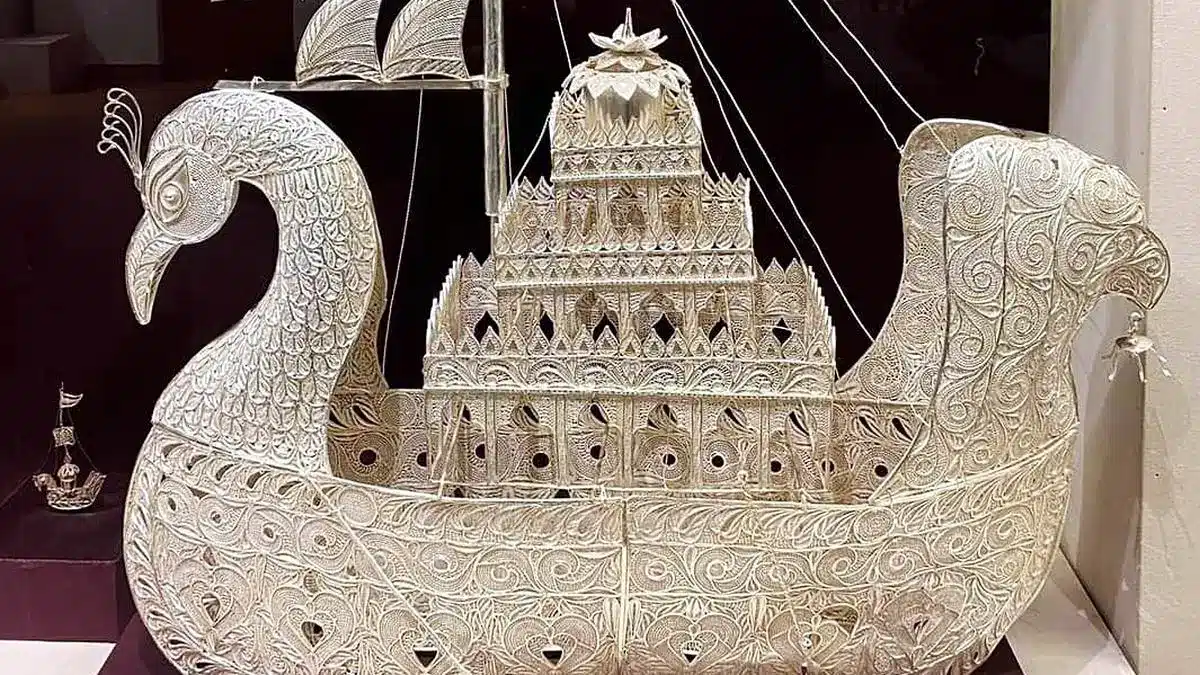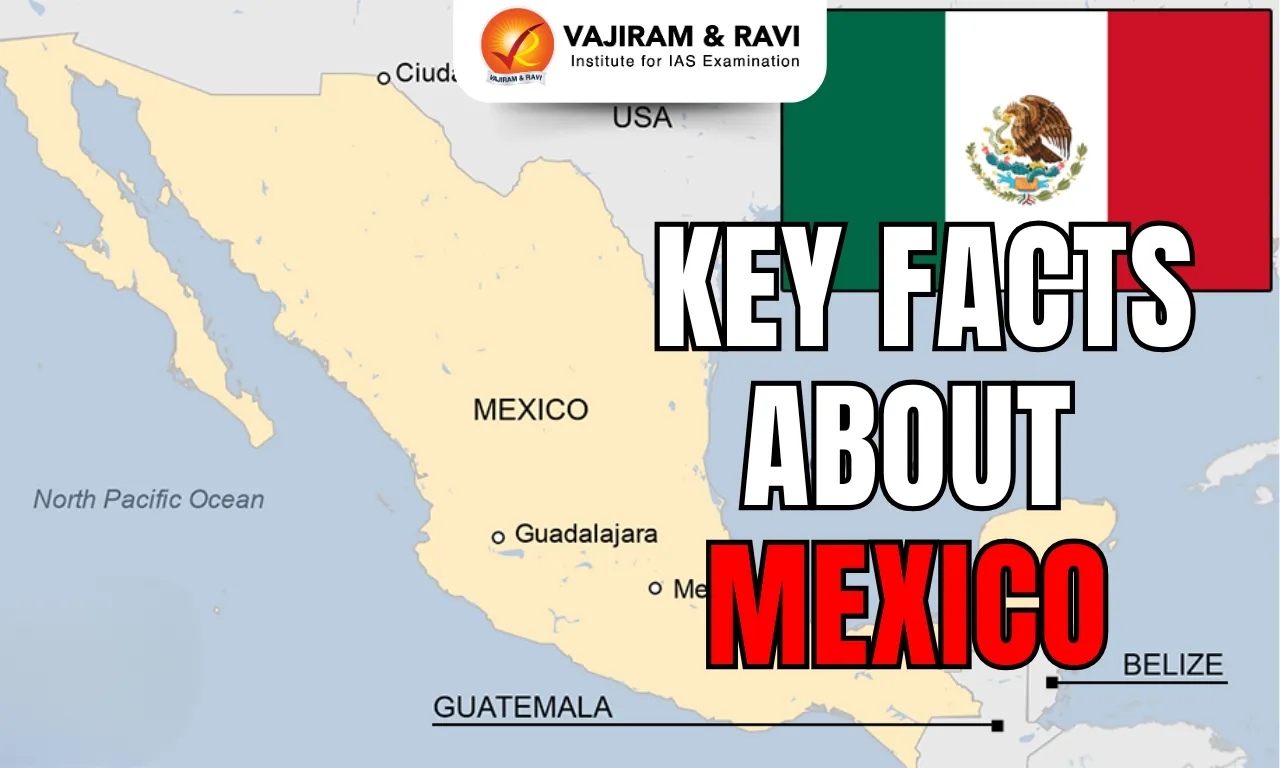About Rupa Tarakasi
- It is one of the most exquisite silver crafts.
- This centuries-old, sophisticated craft is practiced in the silver city of Cuttack, Odisha.
- Origin:
- While the exact origin of the filigree art in Cuttack is not clear, it is known to have existed as far back as the 12th century.
- The art form received considerable patronage under the Mughals.
- Over the years, as Cuttack transitioned through the hands of different rulers, the silver filigree took on a new form with each.
- Process:
- In this work of craft, silver bricks are transformed into thin, fine wires (tara) or foils, from which silver filigree is made with all designs (kasi).
- While different grades of silver are used in the main metal alloy, the craftsmen also use other metals like copper, zinc, cadmium, and tin.
- The artists involved with this filigree work are called “Rupa Banias” or “Roupyakaras” (in Odia).
- This craftsmanship extends to creating various items, including jewellery worn by Odissi dancers, decorative artifacts, accessories, and religious and cultural pieces.
Q1) What is Geographical Indication (GI) Tag?
It is a sign used on products that have a specific geographical origin and possess qualities or a reputation that are due to that origin. This is typically used for agricultural products, foodstuffs, wine and spirit drinks, handicrafts and industrial products. The Geographical Indications of Goods (Registration and Protection) Act, 1999 seeks to provide for the registration and better protection of geographical indications relating to goods in India. This GI tag is valid for 10 years following which it can be renewed.
Source: Odisha: Cuttack city’s silver filigree receives geographical indication tag
Last updated on December, 2025
→ Check out the latest UPSC Syllabus 2026 here.
→ Join Vajiram & Ravi’s Interview Guidance Programme for expert help to crack your final UPSC stage.
→ UPSC Mains Result 2025 is now out.
→ UPSC Notification 2026 is scheduled to be released on January 14, 2026.
→ UPSC Calendar 2026 is released on 15th May, 2025.
→ The UPSC Vacancy 2025 were released 1129, out of which 979 were for UPSC CSE and remaining 150 are for UPSC IFoS.
→ UPSC Prelims 2026 will be conducted on 24th May, 2026 & UPSC Mains 2026 will be conducted on 21st August 2026.
→ The UPSC Selection Process is of 3 stages-Prelims, Mains and Interview.
→ UPSC Result 2024 is released with latest UPSC Marksheet 2024. Check Now!
→ UPSC Prelims Result 2025 is out now for the CSE held on 25 May 2025.
→ UPSC Toppers List 2024 is released now. Shakti Dubey is UPSC AIR 1 2024 Topper.
→ UPSC Prelims Question Paper 2025 and Unofficial Prelims Answer Key 2025 are available now.
→ UPSC Mains Question Paper 2025 is out for Essay, GS 1, 2, 3 & GS 4.
→ UPSC Mains Indian Language Question Paper 2025 is now out.
→ UPSC Mains Optional Question Paper 2025 is now out.
→ Also check Best IAS Coaching in Delhi

















